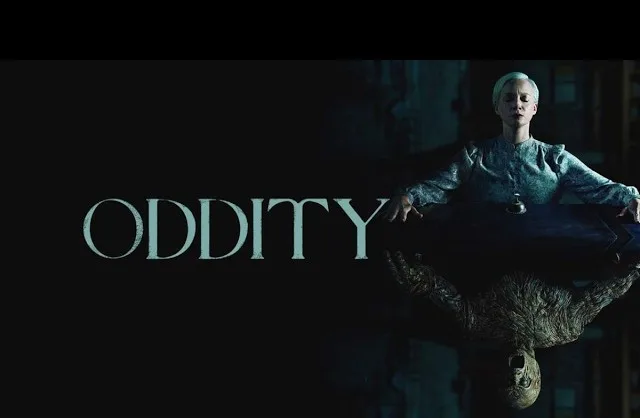The new horror movie “oddity” captivates audiences with its chilling story of a blind medium and her deceased twin sister, earning widespread acclaim
“Oddity,” an independent horror film from Ireland, has taken the US by storm, earning nearly unanimous praise from critics and audiences alike. Directed by Damian McCarthy, the film tells the eerie tale of a blind medium grieving the loss of her twin sister. Released on June 19, “Oddity” has quickly gained a reputation as the scariest film of the year, captivating viewers with its unique blend of psychological and supernatural horror.
The film currently boasts a 98% positive rating on Rotten Tomatoes, reflecting the high acclaim it has received. Viewers have shared their enthusiastic reactions on social media, with many highlighting the film’s ability to provoke intense fear. One viewer wrote on X, formerly known as Twitter, “Oddity is THE scariest film of the year hands down. I screamed so loudly during one sequence… I didn’t even know a horror movie could still elicit that kind of reaction out of me! Absolutely terrifying, I loved it so much.”
Another commented, “Oddity was f***ing terrifying. Scariest movie of the year by far.” Others have praised the film’s execution, with one person noting, “Hands-down, one of my favourite watches in recent memory. This movie had me wrapped around its wooden fingers, and I loved every minute of it. Lean, terrifying, and brilliantly executed. I just love it so much.”
Despite its success in the US, “Oddity” currently does not have a UK release date. The film arrives amid a wave of notable horror releases this year, including the recent FBI satanic horror “Longlegs.” In a four-star review, The Independent’s Clarisse Loughrey praised “Longlegs” for its unsettling blend of real-life serial killer lore and over-the-top horror elements.
As “Oddity” continues to garner acclaim, it solidifies its place as a standout horror film of the year, leaving audiences eagerly anticipating its wider release.
Analysis:
Political:
“Oddity” enters the scene during a politically charged era where media consumption often reflects underlying societal tensions. Horror films, in particular, have historically been used to explore and critique political anxieties. In “Oddity,” the story of a blind medium mourning her twin sister’s death can be seen as a metaphor for the current state of political discourse, which often feels blind to nuance and haunted by past conflicts. The film’s release and subsequent success suggest a public yearning for narratives that, while terrifying, offer a semblance of control over chaos—a sentiment that resonates with today’s political climate.
Social:
Socially, “Oddity” taps into deep-seated fears and societal norms surrounding grief, the supernatural, and the unknown. Horror films have a unique ability to bring taboo topics to the forefront, forcing audiences to confront their fears in a controlled environment. The blind medium protagonist represents marginalized voices often overlooked in mainstream narratives, highlighting themes of disability and loss. The film’s success on social media indicates a collective fascination with stories that challenge societal norms and provoke visceral reactions, reflecting broader societal debates on inclusion and the representation of diverse experiences.
Racial:
While “Oddity” primarily focuses on a personal story of grief and the supernatural, its reception and impact cannot be separated from broader racial dynamics in media representation. The horror genre has seen increasing diversity, with films like “Get Out” and “Us” setting precedents for racial narratives within horror. Although “Oddity” does not explicitly address race, its success contributes to a genre that is becoming more inclusive and reflective of diverse experiences. This trend encourages filmmakers to explore more varied and complex racial themes in their stories.
Gender:
“Oddity” features a female protagonist, adding to the growing list of horror films that centre on strong, complex women. This focus challenges traditional gender roles in horror, where women were often relegated to victim roles. The blind medium’s journey through grief and terror positions her as both vulnerable and powerful, offering a nuanced portrayal of female strength. This narrative aligns with ongoing gender debates about representation and the need for more multifaceted female characters in film. The horror genre’s embrace of such characters signifies progress towards gender equality in storytelling.
Economical:
Economically, “Oddity” arrives at a time when the film industry is navigating the challenges of post-pandemic recovery. Independent films like “Oddity” play a crucial role in this landscape, offering unique content that can compete with big-budget productions. The film’s critical success and high ratings on platforms like Rotten Tomatoes can drive demand, leading to increased revenue and broader distribution opportunities. This success highlights the economic viability of independent horror films, encouraging investment in diverse and innovative storytelling. As audiences seek fresh and engaging content, “Oddity” demonstrates the potential for economic growth within the indie film sector.
